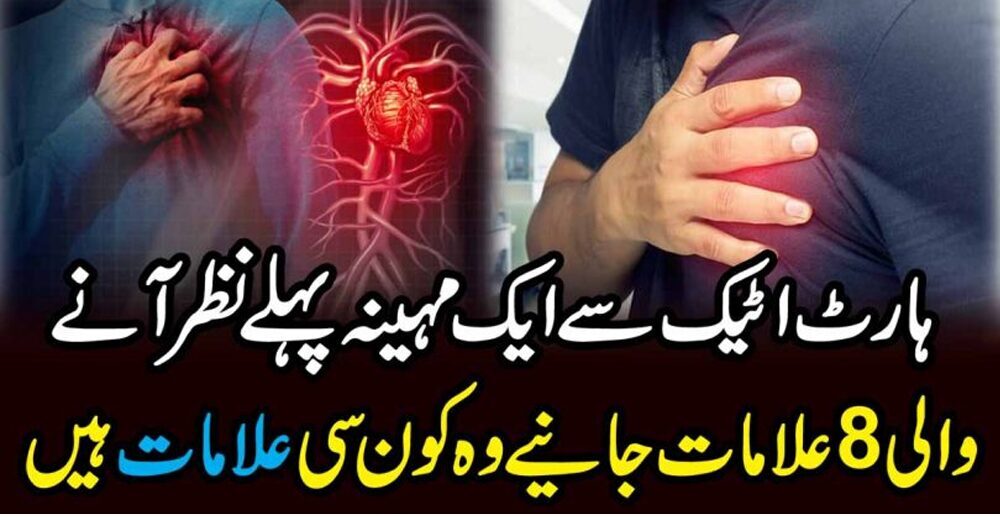Heart attacks remain one of the leading causes of death worldwide, yet many lives could be saved through early recognition of warning signs and immediate medical intervention. Contrary to dramatic portrayals in movies, real-life heart attacks often begin with subtle symptoms that gradually intensify, giving victims a crucial window to seek help. The most common early indicators include persistent chest discomfort, unusual fatigue, shortness of breath, and discomfort in other upper body areas. Women frequently experience different symptoms than men, with more reports of nausea, back pain, and lightheadedness preceding cardiac events. Understanding these warning signs can mean the difference between life and death, as every minute counts when heart muscle begins dying from lack of oxygen-rich blood.

Modern cardiology emphasizes that heart attack symptoms can vary significantly between individuals and may develop over hours, days, or even weeks before the actual cardiac event. Some patients report unexplained anxiety, cold sweats, or a sense of impending doom in the days preceding their attack. Others notice decreasing tolerance for physical activity or unusual sleep disturbances. The key to survival lies in recognizing these signals as potential cardiac warnings rather than dismissing them as normal fatigue or indigestion. Public education about these varied presentations has become a critical component of global heart health initiatives, as timely treatment can prevent permanent heart damage and dramatically improve recovery outcomes. When these symptoms appear, immediate contact with emergency services significantly increases chances of survival and reduces long-term complications.
Global Leaders in Cardiac Care and Heart Attack Treatment
For those facing cardiac emergencies or complex heart conditions, seeking care at world-class cardiology hospitals can provide access to life-saving technologies and expertise. The best cardiac centers combine cutting-edge diagnostic tools, innovative treatment protocols, and multidisciplinary teams of specialists to deliver exceptional patient outcomes. These institutions stand out through their advanced catheterization labs, 24/7 emergency angioplasty services, and comprehensive cardiac rehabilitation programs. Many top hospitals now employ artificial intelligence-assisted diagnostics, robotic surgery systems, and personalized medicine approaches to treat heart disease. Patients benefit from concentrated expertise found at high-volume centers where specialists handle complex cases routinely and participate in groundbreaking clinical research.
The global landscape of cardiac excellence includes renowned hospitals across North America, Europe, and Asia that set benchmarks in heart attack survival rates and innovative treatments. These centers distinguish themselves through rapid emergency response systems, minimally invasive surgical techniques, and specialized cardiac intensive care units staffed by experts. Many operate integrated “heart attack teams” that mobilize within minutes of a patient’s arrival, following optimized protocols to restore blood flow quickly. Beyond emergency care, leading cardiac hospitals offer advanced prevention programs, genetic testing for inherited conditions, and cutting-edge interventions like transcatheter valve replacements. For patients willing to travel for care or seeking second opinions, these institutions represent the pinnacle of cardiac medicine, where survival rates exceed national averages and complications remain low even for high-risk cases.
Early Warning Signs of a Heart Attack
Most Common Symptoms
-
Chest pressure, tightness, or discomfort
-
Pain radiating to arms, neck, jaw, or back
-
Shortness of breath with or without chest pain
-
Cold sweat and clammy skin
-
Sudden dizziness or lightheadedness
Less Recognized Symptoms
-
Unexplained nausea or vomiting
-
Extreme fatigue lasting days
-
Sleep disturbances before the event
-
Anxiety or sense of impending doom
-
Indigestion-like abdominal discomfort
Gender-Specific Differences
Men More Often Experience:
-
Classic chest pain
-
Left arm pain
-
Profuse sweating
Women More Often Experience:
-
Back or jaw pain
-
Shortness of breath
-
Unusual fatigue
-
Nausea/vomiting
What to Do When Symptoms Appear
-
Recognize the Signs
-
Don’t dismiss subtle symptoms
-
Note symptom progression
-
-
Take Immediate Action
-
Call emergency services immediately
-
Chew an aspirin if available (unless allergic)
-
-
Prepare for Help
-
Unlock your door if alone
-
Sit down and stay calm
-
Have medications and medical info ready
-
-
Hospital Protocols
-
Request ECG within 10 minutes of arrival
-
Ask about emergency angioplasty options
-
Know your treatment rights
-
Global Leaders in Cardiac Care
Top-Ranked Cardiac Hospitals Worldwide
Cleveland Clinic (USA)
-
#1 in cardiac care for 25+ years
-
Pioneers in coronary artery bypass
-
Advanced valve repair techniques
Mayo Clinic (USA)
-
Integrated cardiac care model
-
Leading transplant center
-
Cutting-edge imaging technology
Singapore General Hospital
-
Asia’s premier cardiac center
-
Excellent STEMI response times
-
Innovative stent technologies
Charité – Berlin (Germany)
-
European cardiac surgery leader
-
Robotic-assisted procedures
-
Comprehensive rehabilitation
Royal Brompton (UK)
-
Specialist in complex cases
-
World-class heart failure unit
-
Pediatric cardiac excellence
Advanced Heart Attack Treatments
Emergency Interventions
-
Primary Angioplasty (gold standard treatment)
-
Thrombolytic Therapy (clot-busting drugs)
-
Coronary Stenting (drug-eluting options)
Surgical Options
-
Bypass Surgery (multi-vessel disease)
-
VAD Implantation (heart pump support)
-
ECMO Therapy (oxygenation support)
Cutting-Edge Technologies
-
Optical Coherence Tomography (artery imaging)
-
Impella Heart Pump (minimally invasive support)
-
Hypothermia Treatment (brain protection)
Cardiac Rehabilitation Essentials
Core Components
-
Supervised exercise programs
-
Nutritional counseling
-
Stress management techniques
-
Medication education
-
Lifestyle modification
Proven Benefits
-
30% reduction in mortality
-
Improved quality of life
-
Lower readmission rates
-
Better long-term recovery
Preventing Future Cardiac Events
Lifestyle Changes
-
Quit smoking completely
-
Adopt heart-healthy diet
-
Regular aerobic exercise
-
Stress reduction techniques
-
Quality sleep habits
Medical Management
-
Blood pressure control
-
Cholesterol management
-
Diabetes optimization
-
Weight management programs
-
Routine cardiac monitoring
Conclusion
Recognizing early heart attack symptoms and seeking immediate care at specialized cardiac centers dramatically improves survival and recovery outcomes. The world’s leading cardiology hospitals combine rapid emergency response with advanced treatment technologies to provide the best possible care during cardiac crises. Beyond emergency treatment, comprehensive cardiac rehabilitation and prevention programs at these institutions help patients regain health and reduce future risks. By understanding warning signs, acting quickly when symptoms appear, and accessing quality cardiac care, individuals can significantly improve their chances of surviving heart attacks with better long-term heart function. Remember that heart attack symptoms don’t always appear dramatic but warrant immediate medical attention—when in doubt, getting evaluated could save your life. For those with cardiac risk factors, researching top cardiac hospitals in advance ensures you know where to seek the best possible care if needed.



